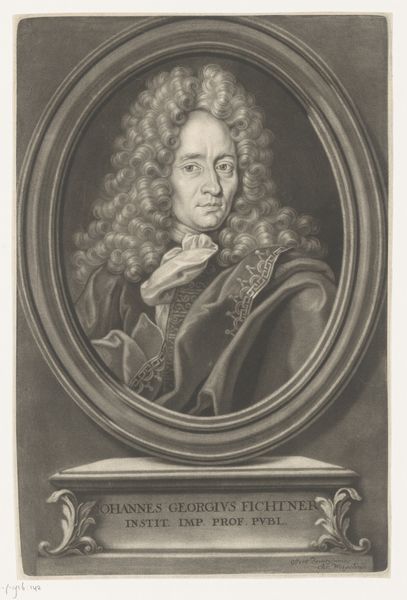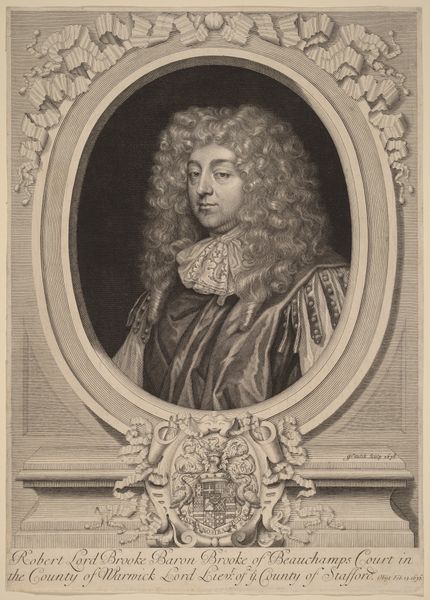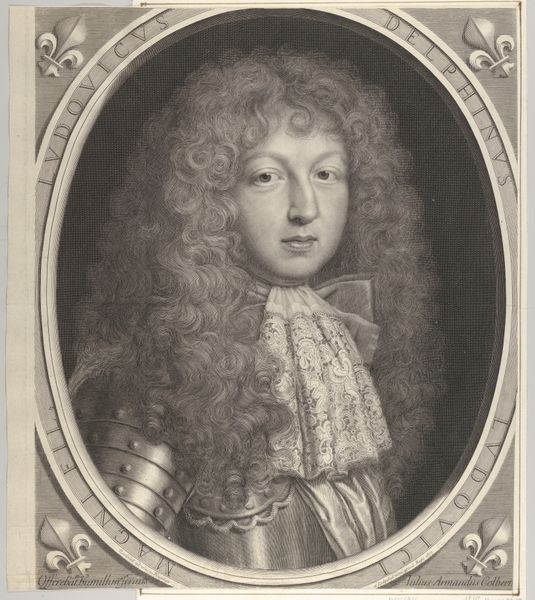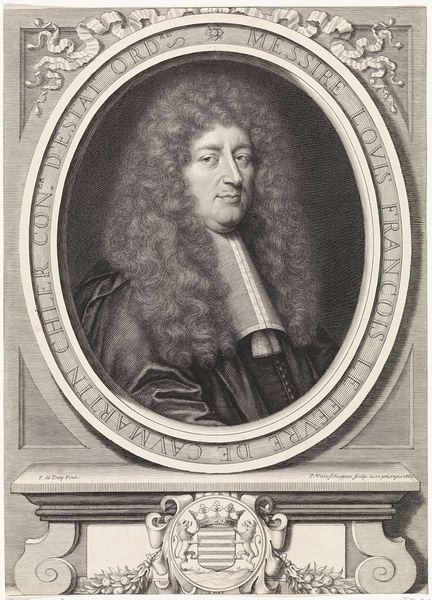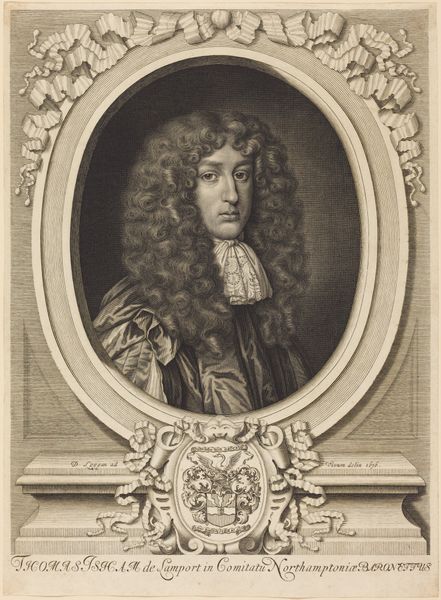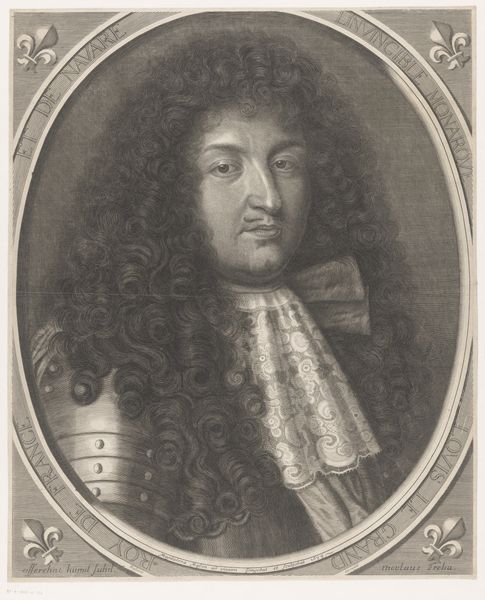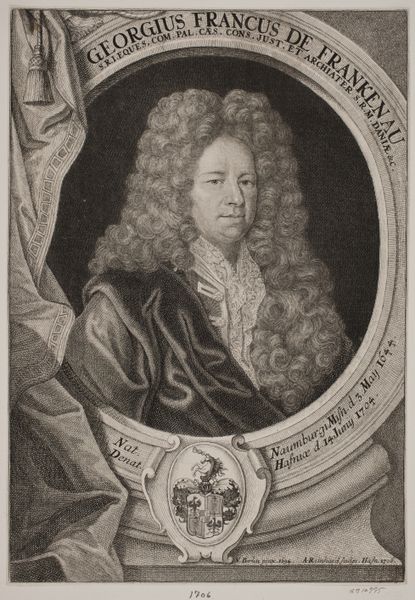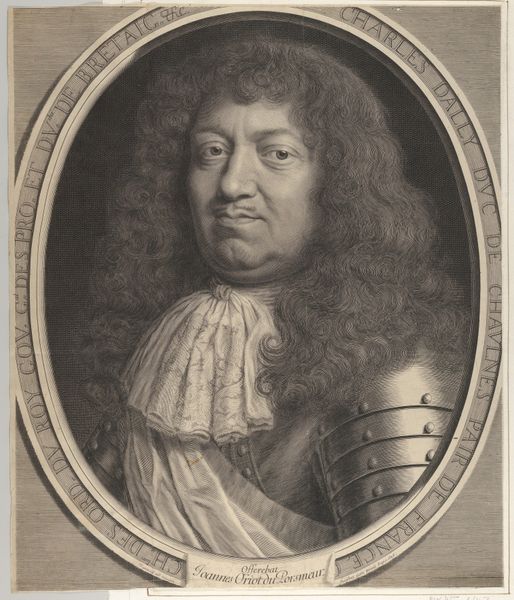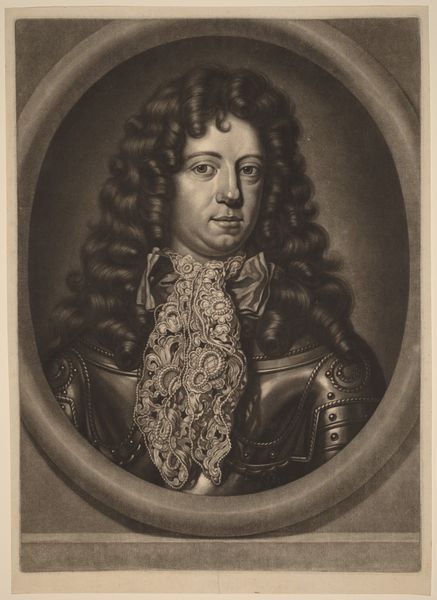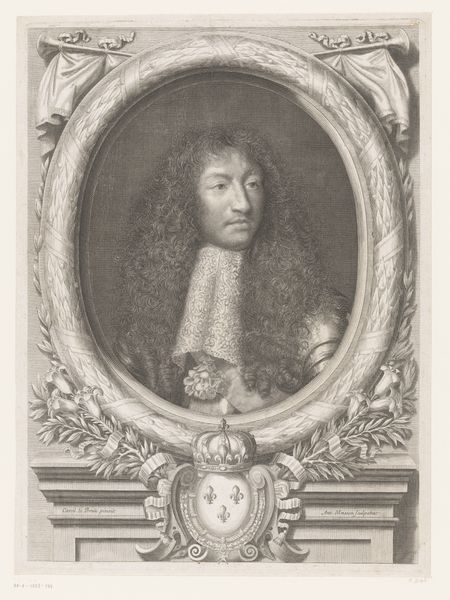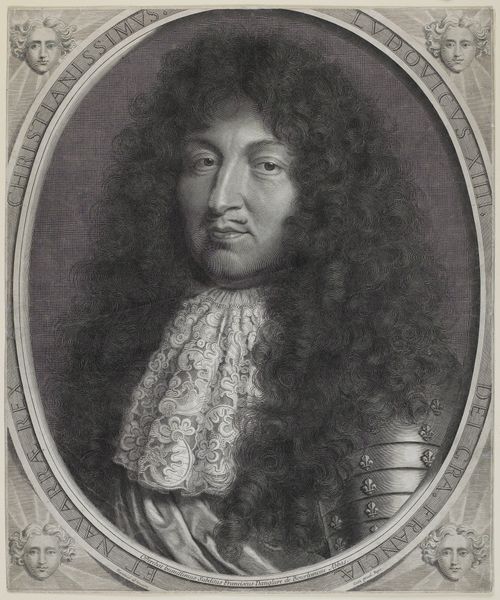
painting, oil-paint
#
portrait
#
baroque
#
painting
#
oil-paint
#
sculpture
#
miniature
Dimensions: height 3.2 cm, width 2.5 cm, depth 0.3 cm
Copyright: Rijks Museum: Open Domain
Samuel Blesendorf painted this enamel portrait of Frederick I, King of Prussia, sometime before 1706. As a ruler, Frederick was obsessed with matters of protocol, likely informing his desire to be portrayed in a way that underscored his social position. Consider the codes of wealth and power at play here. Note the highly stylized wig, the lace collar, and the jeweled armor. By the 17th century, royal portraiture was a well-established genre across Europe. It was employed to project an image of power, authority, and wealth. Such imagery functioned as propaganda, solidifying the ruler’s position in the minds of the public. The fashion and tastes of the Prussian court were heavily influenced by that of Versailles. Frederick I, like Louis XIV, used courtly rituals and artistic patronage to enhance his authority. Court artists like Blesendorf were crucial in the creation and dissemination of these royal images. By examining letters, financial accounts, and other historical documents, we can gain a deeper understanding of the social and political functions of this portrait.
Comments
No comments
Be the first to comment and join the conversation on the ultimate creative platform.
